
Pastiera is a traditional Easter cake from Naples, filled with boiled wheat, ricotta, and candied citrus. The wheat provides an interesting texture and also makes the cake quite filling. The candied citron, candied orange, lemon zest, orange blossom water, and cinnamon, give the cake a delicious flavor as well.

The wheat needs to be soaked at least 24 hours before it is cooked. When using durum wheat (the usual in Southern Italy), it needs to be soaked for 3 days and the water needs to be changed each morning and each evening. With our soft wheat, 24 hours is sufficient. The wheat is then cooked with milk, lemon zest, and butter until it is al dente. This takes about an hour and a half, or half that time with a pressure cooker. To cut down on the preparation time, in Italy the boiled wheat (grano cotto), is sold precooked. Since it is not available here, I made my own from scratch.
The hardest part of making this cake is to avoid that the ‘lattice’ of shortcrust pastry on top sinks into the filling. Next time I make this cake, I will allow the filling to firm up in the refrigerator to make this easier. I’ve used the recipe from GialloZafferano with some modifications, the most important one being that I cooked the wheat myself. The authentic pan for this is not a springform pan but a conical pan with a top diameter of 24 cm (9.4″) and a bottom diameter of 21 cm (8.3″).
Ingredients

For a 24 cm (9″) springform pan
For the grano cotto
225 grams (1 cup + 2 Tbsp) soft wheat, soaked at least 24 hours in 750 ml (3 cups) water
250 ml (1 cup) milk
30 grams (2 Tbsp) butter
grated zest of 1 lemon
For the sweet shortcrust pastry (pasta frolla)
315 grams (2 cups + 1 Tbsp) pastry flour
155 grams (11 Tbsp) cold butter
1 egg + 2 egg yolks
135 grams (2/3 cups) sugar
For the filling
400 grams (1 2/3 cups) well-drained ricotta (preferably half cow’s milk and half sheep’s milk)
350 grams (1 3/4 cups) sugar
2 eggs + 2 egg yolks
50 grams (1/4 cup) chopped candied citron (Dutch: sukade)
50 grams (1/4 cup) chopped candied orange peel
2 Tbsp orange blossom water
1/8 tsp ground cinnamon
seeds from 1 vanilla pod
To finish
butter for the springform pan
1 egg, beaten
icing sugar
Preparation

The day before, put the wheat in a bowl and add the water.

Cover with plastic wrap and allow to soak for 24 hours.

The following day, put the wheat in a pot or a pressure cooker and add the milk.
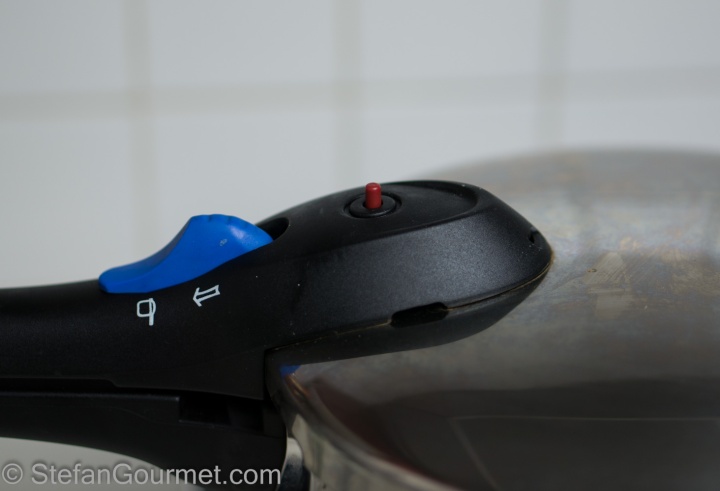
If pressure cooking, bring to pressure and cook for 45 minutes.
If not pressure cooking, bring to a boil, reduce the heat to a simmer, cover, and cook for 90 minutes.

At the end of the cooking time, the wheat should be cooked al dente and the liquid should be absorbed. Simmer it longer if needed.

While the wheat is cooking, make the pasta frolla (sweet shortcrust pastry). Sift the flour into the bowl of a stand mixer fitted with the paddle attachment. Add the sugar.

Add the butter, cut into cubes.

Process until the mixture looks like sand, with some pea-sized pieces of butter still visible.
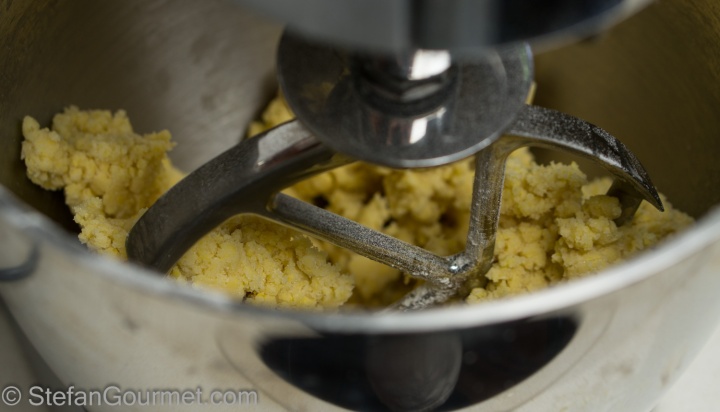
Process until the dough comes together.
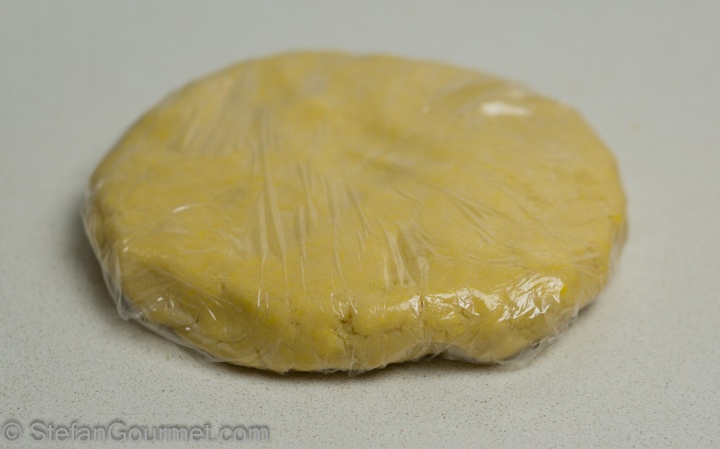
Gather the dough and give it the shape of a disc. Wrap in cling film and refrigerate for at least 1 hour.

While the pastry is resting, prepare the filling. Combine the ricotta, sugar, cinnamon, and orange blossom water in the bowl of a food processor.
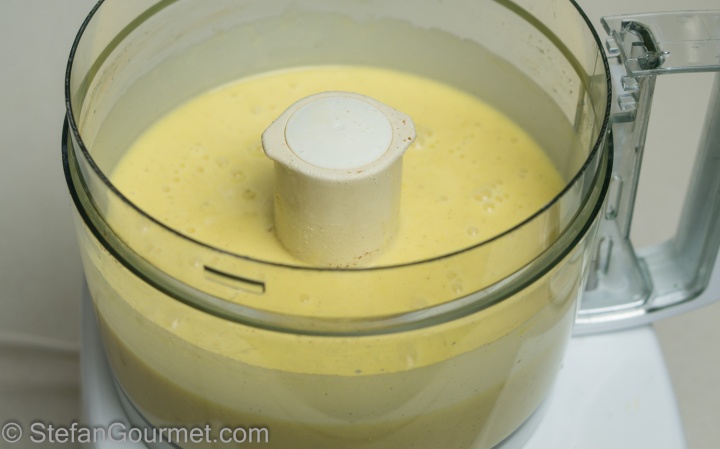
Process until smooth, scraping down the sides of the bowl as needed.

When the cooked wheat is finished and has cooled down somewhat, add the candied citron and orange.
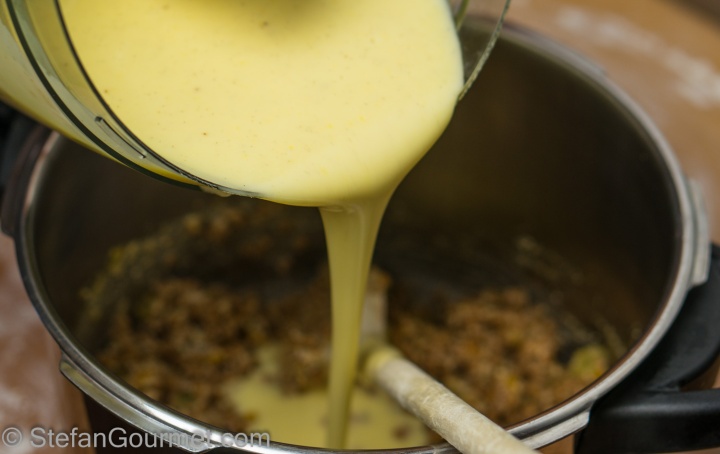
Add the ricotta mixture as well.
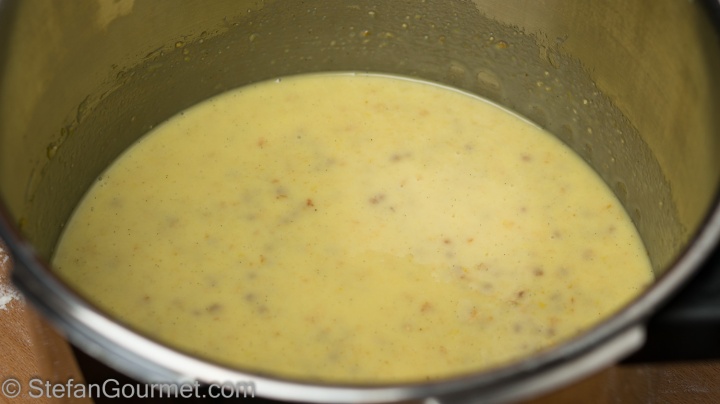
Stir to mix. Refrigerate the filling to allow it to firm up, which will (hopefully) make it easier not to let the lattice sink into the filling.
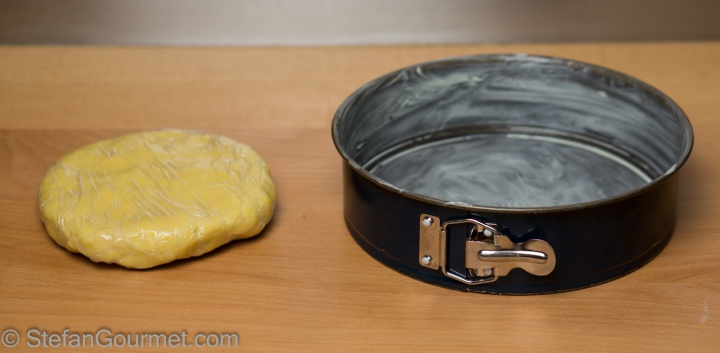
Preheat the oven to 180ºC/375ºF (or 160ºC/320ºF if fan forced). Butter a 24 cm (9″) springform pan. Take the pasta frolla out of the refrigerator.

On a floured work surface, preferably wooden, roll out the shortcrust pastry such that it has an even thickness of about 3 mm (1/8 inch).

With the help of the rolling pin, transfer the dough to the buttered pan.

Line the pan with the pastry, reserving the pastry that sticks out to make the lattice.
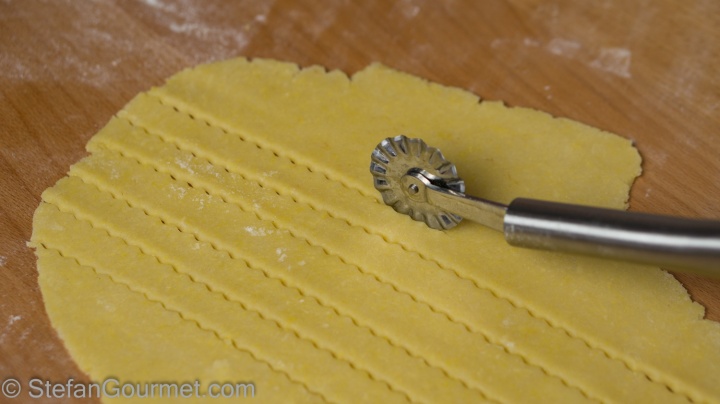
Roll out the reserved pastry and with a pastry wheel cut it into strips of about 8 mm (1/3 inch) wide.
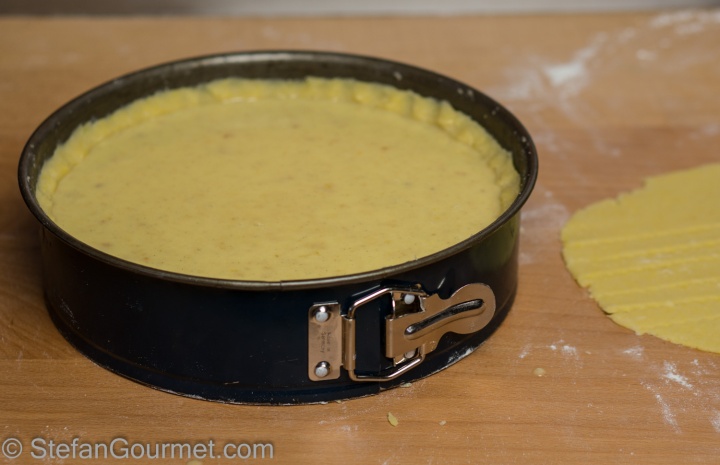
Transfer the filling into the pan lined with pastry.

Very carefully arrange the strips of pastry on top.
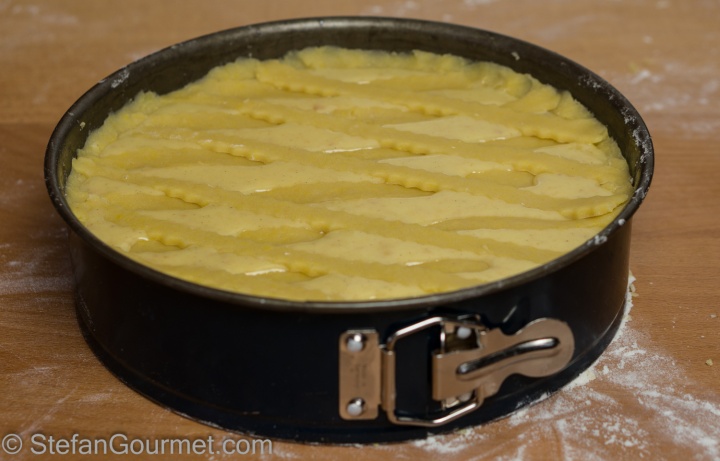
The lattice should not be at straight angle but should rather be in a diamond pattern.

Carefully brush the pastry with the beaten egg.

Bake at 180ºC/375ºF (or 160ºC/320ºF if fan forced) for 80 minutes, lowering the heat for the last 30 minutes, until the top is golden brown.

Allow the pastiera to cool to room temperature. It will be even better the next day, and it will be easier to cut when you store it in the refrigerator.

Sprinkle with icing sugar (using a sieve to distribute it evenly) before serving to make it look pretty.
Wine pairing
This is great with passito di pantelleria, especially Ben Ryè by Donnafugata.
Flashback

These colomba muffins are my alternate take on Colomba Pasquale, another traditional Easter sweet from Italy. Colomba is a sweet bread in the shape of a cross with candied citrus and an almond glaze. It is actually not supposed to be a cross but a dove, since that is what “colomba” means. It takes a bit of good will to recognize the shape of a flying dove. The traditional way of making colomba takes about 24 hours and 5 different rising steps. This recipe requires ‘only’ three, and with a stand mixer it is not a lot of work and just takes time. In Italy cardboard molds are sold before Easter for baking a colomba at home. I made the colomba for Easter dinner and I thought it would be nice to use a muffin tin instead. This makes for a nice presentation, even though it now certainly does not look like a dove anymore. These muffins turned out great, very soft and fragrant.
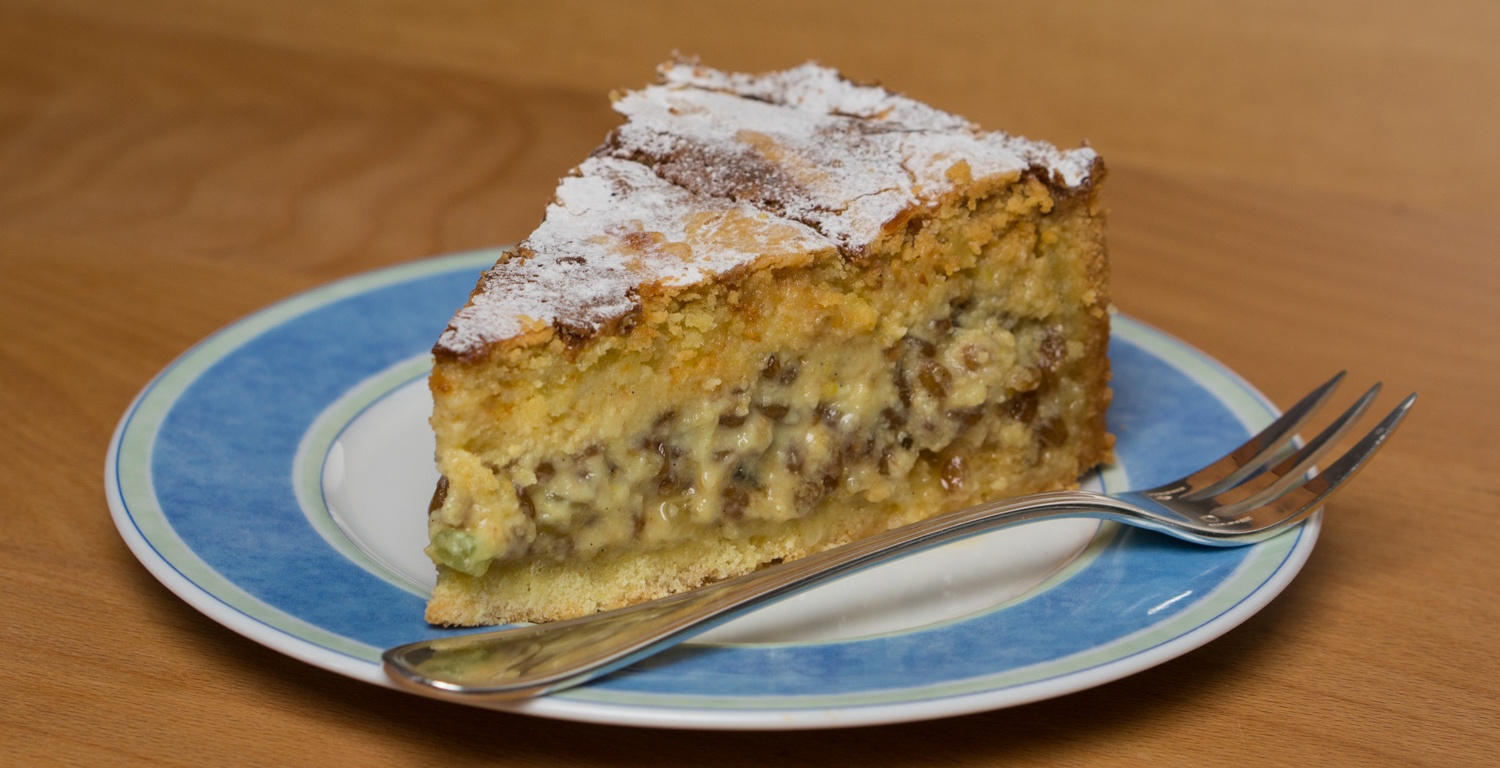
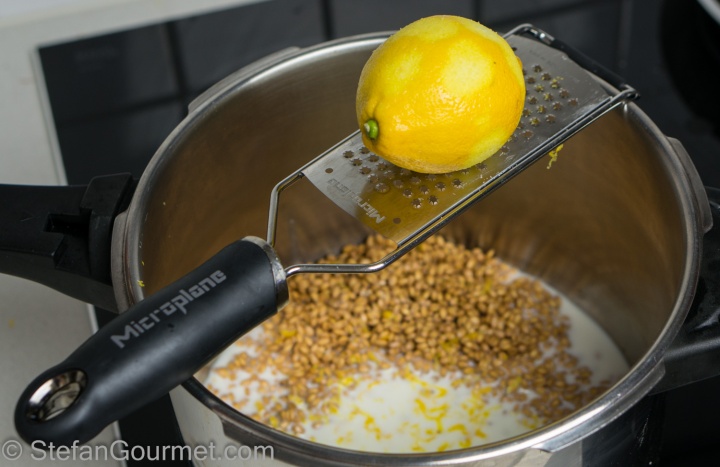
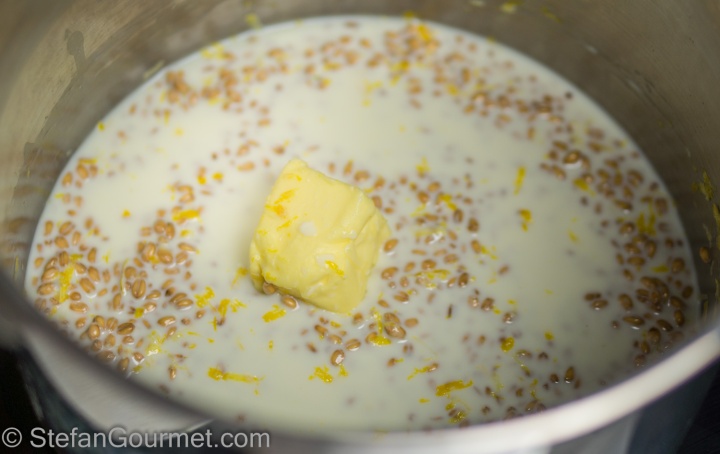
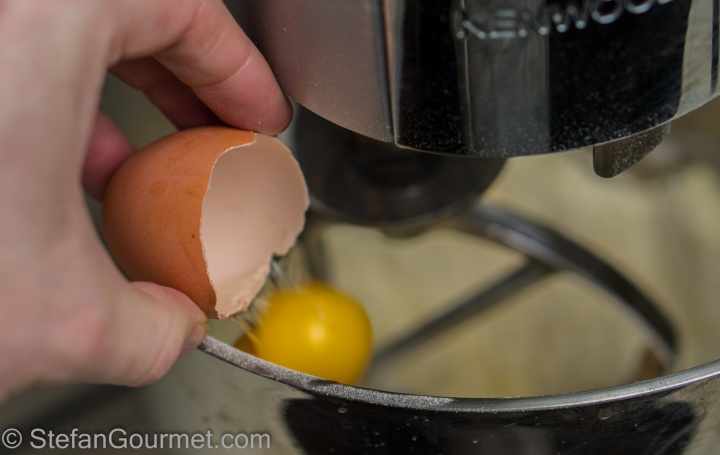


This sounds pretty incredible! It must be one of those peasant-derived desserts, with the inclusion of the wheat. It’s probably a hearty dessert at that!
LikeLiked by 1 person
It certainly is! Thanks, Mimi, and Happy Easter!
LikeLike
Sei meglio di un napoletano! Io (che non sono napoletana) non ho mai fatto la pastiera partendo dai chicchi di grano! E’ bellissima. Però l’anno prossimo devi usare uno stampo più basso e svasato (ruoto). Poi la torta non si sformerà, ma và bene così. Tutti la regalano ancora nello stampo! 😀 Buona Pasqua!!
LikeLiked by 1 person
Grazie, Simona. Non ho uno stampo svasato, ma proverei di trovarlo. Buona Pasqua!
LikeLiked by 1 person
In tanti anni di frequentazioni napoletane io ne ho la cantina piena, però si trova facilmente su internet alla voce “ruoto”! Hai un anno davanti!
LikeLike
Ho aggiunto un commento nel post che si dovrebbe usare questo tipo di stampo.
LikeLiked by 1 person
Un vero divulgatore!
LikeLiked by 1 person
Oh, how I miss this. My mother made it every year. Yours looks delicious.
Appreciate your posts on Sous Vide. We’re new to it and find your site quite helpful.
Happy Easter.
LikeLiked by 1 person
Hi Linda, thanks for visiting and taking the time to leave such a nice message. Hope to see you again soon, and please feel free to ask any questions about sous-vide you may have.
LikeLike
Bravissimo Stefan! Questa è una grande prova di abilità e di bravura. Complimenti!
LikeLiked by 1 person
Grazie, Silva. Buona Pasqua!
LikeLike
I shure would like to taste this cake.
LikeLiked by 1 person
Oh my, looks delicious! My mom would make a similar cake for Easter. We called it casata. I don’t have her recipe, but will give yours a try. Thanks for sharing Stefan:)
LikeLike
Hi Marisa, there are indeed some similarities between this cake from Napels and cassata (from Sicily). You can find the recipe for cassata here: https://stefangourmet.com/2013/08/11/cassata-siciliana/
You are welcome and Happy Easter!
LikeLiked by 1 person
Stefano sei meravigliosamente bravo. Felice Pasqua Bea
LikeLiked by 1 person
Buona Pasqua, Bea!
LikeLike
Yours looks absolutely delicious! I tried, over the years, to make myself like it but it always left underwhelmed. Buona Pasqua Stefan! Ma in Olanda cosa mangiate a Pasqua?
LikeLiked by 1 person
Buona Pasqua! Qui si mangiano sopratutto le uova sode e colorate per la colazione. E conigli di cioccolato, ma in Olanda si dice lepre di pasqua, non coniglio.
LikeLike
You never fail to amaze Mon Stefan ! This looks fabulous. I know someone who makes the most delicious Easter wheat pie and the filling in this pastiera reminds me of it. as I’ve said before… I’d like you to adopt me! ; o )
LikeLiked by 1 person
My Ukrainian in-laws serve a wheat soup at Christmas, called kutia. I never did learn to enjoy it, even though it’s flavored with honey and poppy seeds and other good things. But I’ve never liked porridge or rice pudding either – so I don’t blame it on the wheat. Your cake, wheat and all, looks just delicious!
LikeLiked by 1 person
Stefan,
That is the most elegant looking cake I have seen in a long time. Beautiful texture.
LikeLike
Reminds me of the Osterkuchen of Switzerland, Austria and Southern Germany. Usually not made with wheat, but rather rice or farina. The flavorings and structure however are similar.
As a small child I thought it was a boring cake because there wasn’t any gooey stuff all over. Now I love them.
And I’m sure I’d love your Pastiera Napoletana.
LikeLiked by 1 person
Hello, question: are using whole grain (grano integrale)? I want to try that option because where I live it’s imposible to find the typical grano cotto they use in Italy
LikeLike
Yes I am using whole grain/grano integrale to make my own grano cotto. I apologize for the delay in responding to your question.
LikeLike
Ciao Stefano,
your problem with the too liquid filling may be your grain to ricotta mix ratio. I stumbled upon your blog trying to find a recipe how to cook the grano (as I can’t get those jars here in Canada), but I used the recipe of Laura Vitale (https://www.laurainthekitchen.com/recipes/pastiera-napoletana-/) for the pastiera itself.
Her recipe is double the amount (for two pastiera’s) but she uses a total of 500g of ricotta for two pies.
Cheers,
Julie
LikeLike
Hi Julie, thanks for the suggestion. I used the quantities from Giallo Zafferano, which usually have reliable recipes. Next time I’ll make this, I’ll be sure to do some more research regarding the quantity of ricotta to be used.
LikeLike